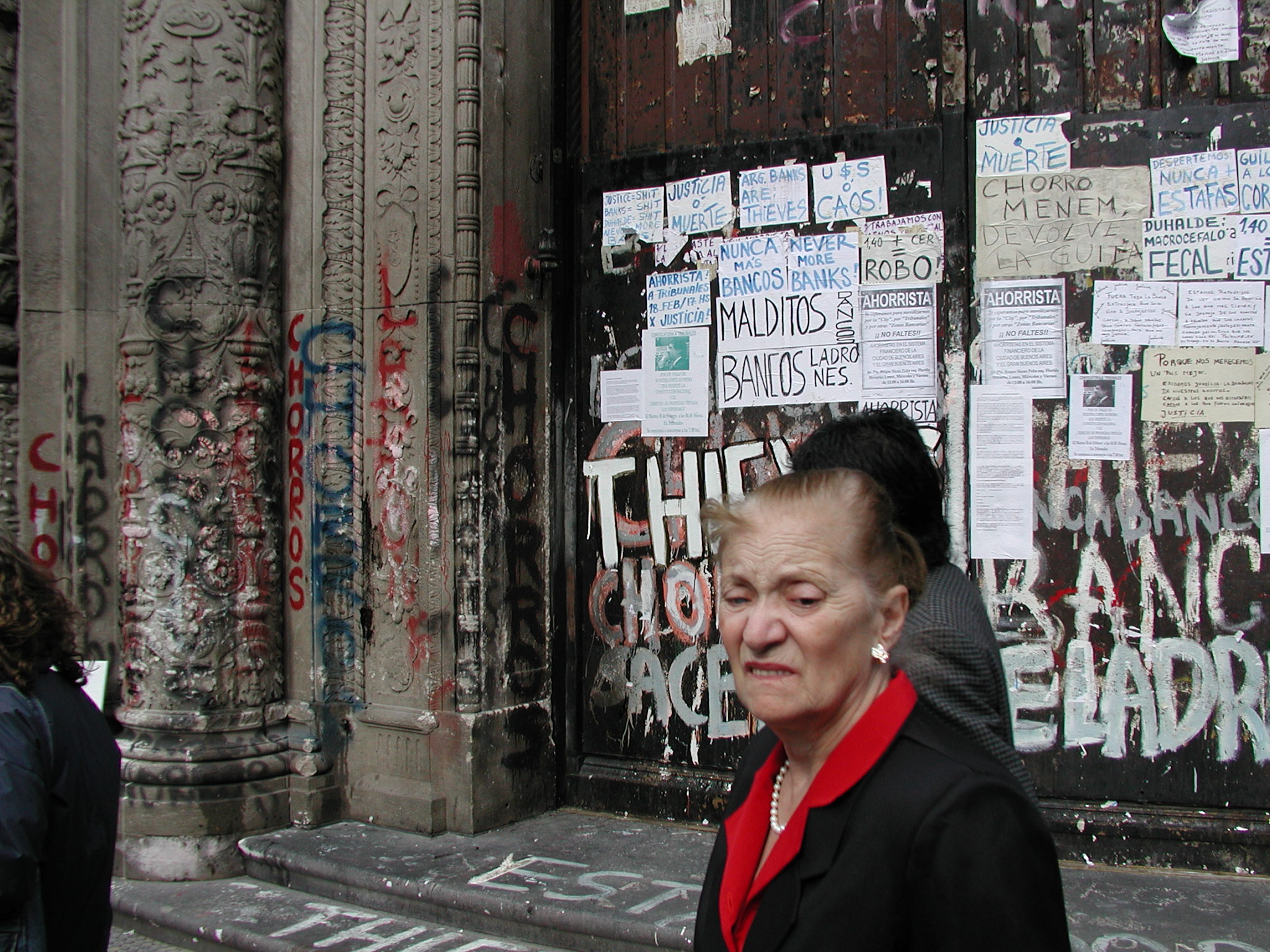Over the last week we all shook our heads in frustration at the excesses of Wall Street and the banks that we, as taxpayers, are supporting. We heard of corporate jets, billions in bonuses and an $87,000 area rug.
This all made me think of the streets of Buenos Aires after the economic collapse of Argentina in 2001. Nearly a year after the protests quieted, these pictures captured the collective frustration of the Argentines as expressed on the canvas of architecture. Old, new, local and foreign: the banks in Buenos Aires had been attacked, vandalized and covered with graffiti. The graffiti accused the banks of robbery and even murder. Architecture essentially became a proxy for failed government intervention and a symbol of fiscal malfeasance, and as such bore the brunt of the populace’s anger and frustration. In response, banks were forced to board up all their doors and windows, only allowing entrance through a door (often steel) that was heavily guarded and equipped with a metal detector. The banks, so often rendered in an architecture of strength, transparency and brilliance were suddenly forced to recede into an architecture of conflict.

Lady snears in front of Bank of Boston in Buenos Aires

Citibank in Buenos Aires
Last week we posted about the authenticity of materials and by extension of architecture. The underlying idea that architecture can embody meaning and breed comfort points to the symbolic power of building. Buildings express our yearnings and our fears – an expression in built form of a collective will. One might say that the architecture of the last decade has been characterized by optimism, flamboyance and even excess. This begs the question of what our response will be to the stark economic and social climate that we face.

Recent Comments